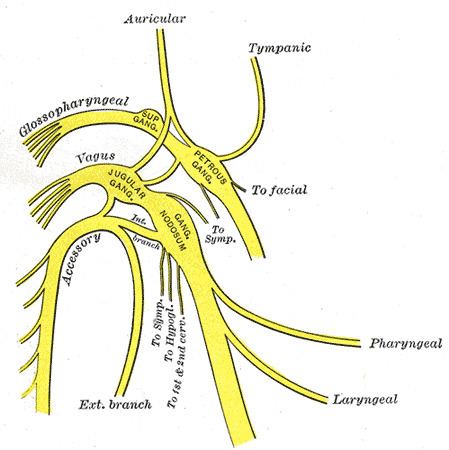From vagus nerve Dorlands
/Elsevier g_02/12384714 | MeSH A08.340.390.550 TA A14.2.01.157 | |
 | ||
Latin Ganglion nodosum,
ganglion inferius nervi vagi | ||
The inferior ganglion of vagus nerve, or nodose ganglion (ganglion nodosum; ) is cylindrical in form, of a reddish color, and 2.5 cm (0.98 in) in length. It is located in the height of the transverse process of the first cervical vertebra (atlas).
Passing through it is the cranial portion of the accessory nerve, which blends with the vagus nerve below the ganglion.
The inferior ganglion is larger than the superior ganglion.
Function
It is chiefly visceral afferent in function concerning sensation of heart, larynx, lungs and alimentary tract from the pharynx to the transverse colon. These visceral afferents synapse centrally in the solitary nucleus.
Both ganglia are traversed by parasympathetic, and perhaps some sympathetic fibres.
Preganglionic motor fibres (ganglionic branches) from the dorsal vagal nucleus and the special visceral efferents from the nucleus ambiguus, which descend to the inferior ganglion of vagus nerve, form a band skirting the ganglion.
